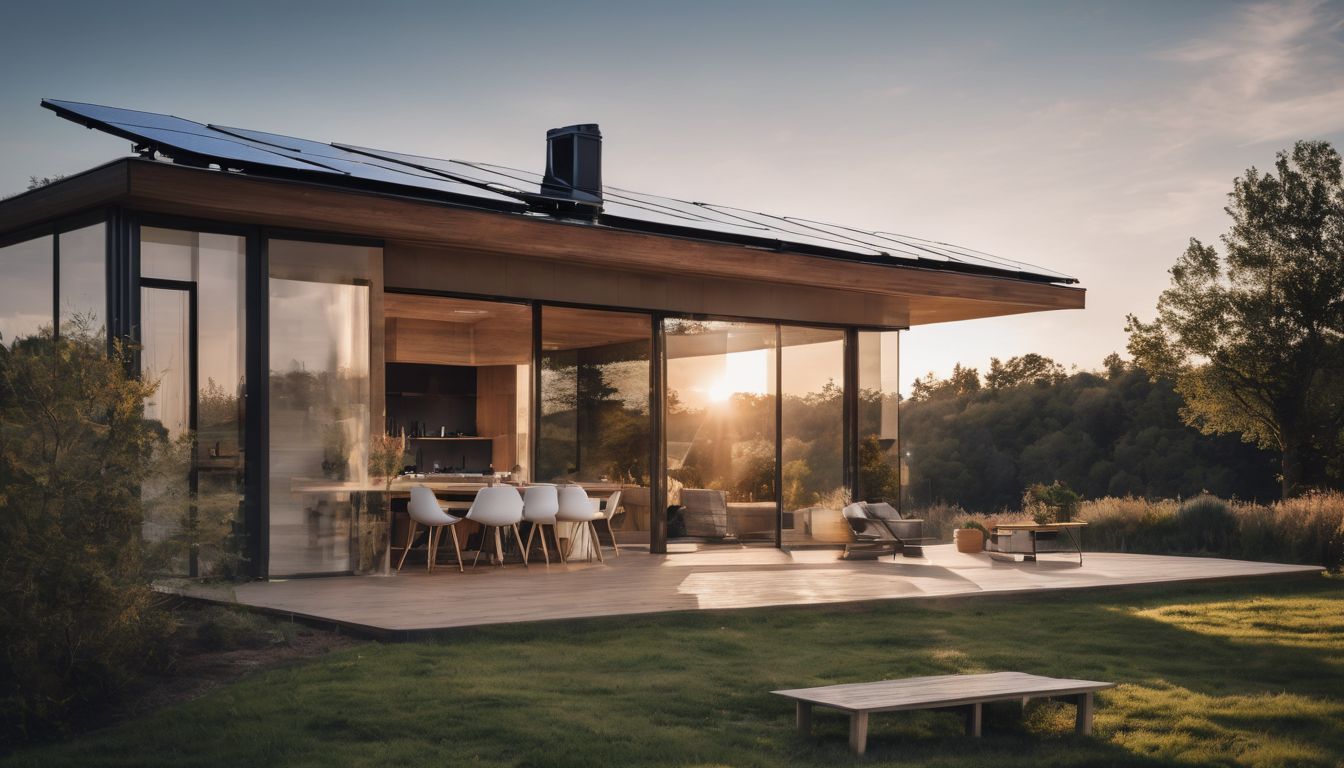Your guide to building a bicycle generator!
Using a stationary bike is good exercise, but wouldn’t it be much cooler if you made it generate free electricity for you? Converting your old bike into a bicycle generator is great for the environment, beneficial for your health, and protects your peace of mind.
Benefits for the environment: Using a bicycle to generate free electricity is a completely clean, zero-emissions way to reduce the use of more traditional energy sources, such as fossil fuels. And, if you weren’t that aware of all the energy that your appliances were using, this is a great way to experience it firsthand.
Benefits for your health: It’s always good to have a little incentive to exercise. For people that exercise inconsistently, you could try using the free electricity you receive as a little self-reward. Or, if you want to challenge your body, try picking one appliance that you love and allow it to only to be powered by the bicycle generator. You’ll be exercising all the time in no time!
Benefits for your peace of mind: If you happen to live in an area that gets hit by rolling blackouts, you know how convenient it would be to have an alternative power source. You can charge radios, cell phones, walkie-talkies, flashlights, heaters, or fans. If a natural disaster has cut off the power source for a few days, this project could be invaluable.
Cost: Medium to High
If you don’t already have some of the necessary tools and parts, this project could cost you hundreds of dollars. On the other hand, you can find a lot of free and cheap materials in recycling centers and garage sales.
Time and effort: Medium to High
This project may take only a few hours for those with experience working with electrical wiring, but for most, this challenging project will take a little longer. This particular project is also a little bit more extensive than most, since it allows for a solar panel to be attached to keep the battery charged.
Materials:
Bicycle Training Stand
14 Amp 12 V DC Permanent Magnet Generator
12 V 25 Amp Charge Controller
12 V Deep Cycle Battery
DC to AC Inverter
Front Wheel Lift Block
15 Amp Blocking Diode
Pulley
10-foot V-Belt
Allen Wrenches
Tire Lever
Cord Grip Connector
Wire Stripper
Wire Connector
Diversion Load Box
Crimp on Ring Terminal
Crimpers
Screws
Negative and Positive Bolt Studs
Solar Power Input Box
Voltmeter1
Instructions:
1. Choosing a bike: Use an old bike with a large back wheel, which is perfect for creating a great deal of rotations on the pulley for the generator. Be sure to choose a bike that probably couldn’t be used on the road anymore. If it could, it would probably be doing a lot more good for the environment as a replacement for cars or busses. Some stationary bikes are also satisfactory, but many tend to use friction as resistance, making the bicycle generator significantly less efficient.2
2. Installing the Blocking Diode onto the Generator: The first thing you’ll be installing is the blocking diode, which is what prevents the electricity you generate from flowing back out of the battery.
- First, remove the black box sitting on the generator by unscrewing the two sides. Remove knockouts by placing the box on its side, and stab the scissor pliers through the circle. Do the same for the circle on the opposite side.
- Now, install a cord grip through one of the circles. Through the opposite circle, stick in the anode from the diode. Secure the box to the diode by tightening the ring in the box. Then, place the wire box onto the generator. Tighten the screws to secure them together.
- Strip the ends of the anode from the diode and the positive wire from the generator. Twist each of the exposed ends together, and then twist a wire connector clockwise on top of the exposed wire ends. Tug slightly on the wire connector to be sure they have been connected. Stick the negative wire from the generator through the cord grip connector the so that it sticks out. Finally, tuck the wires down into the box and install the lid back onto the metal box.
3. Installing a bike plate: You will probably want to use a bike plate to secure the diversion load box, generator, solar power input box, and charge controller. Either build your own out of wood or buy a prefabricated one such as the one found here: http://pedalpowergenerator.com/#PARTS. On the board, install the diversion load box and the solar power input box on the bottom of the board, with their wires facing the same direction as the anode wire on the generator. Install the charge controller on top of the board, facing the opposite direction as anode wire on the generator.
4. Wiring: Now, you’ll be doing a lot more wiring. Have a wire cutter handy so that you can try to minimize the length of the wires. You don’t want to trip over them every time you go onto your bike! Of course, be sure not to cut them too close, since they have to be able to reach without being stretched.
- First, strip the end of the black wire from the generator and twist onto it a crimp on ring terminal. The exposed wire should barely be visible from the top. Use the pliers to cinch the crimp around the wire, then tug on it to check that it has connected. Do the same for the black wires from the solar power input box and the diversion load box.
- Strip the end of the cathode wire from the blocking diode and install a crimp terminal. Do the same for the positive wire from the solar power input box, and plug them together.
- Now, strip the end of another red wire from the solar output box. In the input hole on the charge controller, turn the screw underneath counterclockwise to allow the wire to get through the opening. Insert the wire, then re-tighten. Do the same procedure for the end of the black wire for the diversion load box and put it into the battery negative slot of the charge controller. Then, do it for the red wire from the diversion load box into the divert slot. Then, place a yellow wire into the positive battery slot under the power connections section.
- Install a crimp on the ring terminal to the end of the negative wire from the diversion load box. Now put these rings onto a bolt stud between two nuts, placing a star washer between them. Install the bolt a half-inch deep into a hole in the bike stand plate, and then twist the nuts together. Tighten with a wrench.
- Strip one end of a red wire, and twist on a crimp on ring terminal. Strip the end of a yellow wire, and twist on a crimp on ring terminal. Using the same process as the negative wire bolt stud, place these on the positive wire bolt stud and install into the right-hand side of the board. Place the other end of the red wire into the charge controller slot labeled battery positive under the section called battery sensing.
- Use cable ties to tie everything together.
5. Remove the Rear Tire: To work with the tires more easily, place the tire upside down so that the wheels are elevated.
- Flatten the back tire by pressing the tire pressure relief button. If the tire doesn’t have one, use a screwdriver to twist open the tire opening.
- Now, release the brake shoes from the tire. Squeeze together the wire on the bottom of the frame with the rubber soles of the brake. Lift off the wire attachment.
- Look at the hub of the bicycle tire. Pivot the handle outwards, then spin it counterclockwise. While gently pulling off the gears, you can now lift the bicycle tire completely off the frame.
- Set down the wheel and pull back the lip of the tire on the wheel. Insert a tire lever underneath the lip and hook it onto the frame. Four inches to the left or to the right, insert another tire lever and hook it to the frame. Use the last tire lever to peel away the first lip all around the wheel. Repeat this process with the second lip of the flat tire. Now, you can remove the tire completely.
6. Install the Rear Wheel Rim: Twist the rods of the bicycle stand until they are far apart enough for the bicycle to be inserted between them. Then, tighten them halfway onto the hub of the back wheel.
7. Install the Pulley and V-Belt: You have reached the part where you’ll see how the pulley is supposed to work.
- Install the pulley onto the generator by sliding it into the generator rod. Use a screwdriver to tighten the screws.
- Now tighten the left and right rods of the bicycle stand in order to align the wheel directly over the pulley. Correct alignment reduces friction, increases energy, and maintains the belt.
- Using pliers, twist one segment of the v-belt until you can pull it open. Try the belt over the pulley and bike wheel, removing the segments that are too long. Test the system by spinning the wheel. If it works, the pulley should be spinning rapidly. Make sure that there is only a little leeway.
- Bring over the battery, and attach the red giant alligator clip to the red bolt and the black alligator clip to the black bolt.
8. Set Charge Controller Voltage: Put the voltmeter on the DC setting. Put the alligator clips on the corresponding ends of the battery, which should read about 12 V. Once you start pedaling, you should see an increase in the voltage.3
Congrats! You now have your very own bicycle generator!




